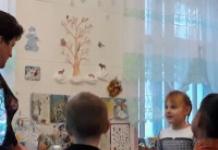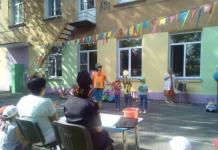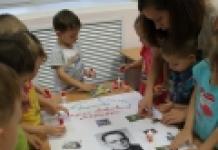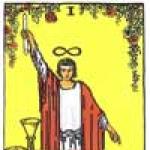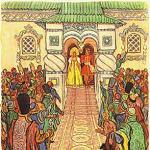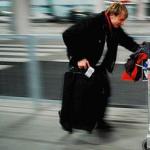Gulnara


We live in a beautiful city with wide streets and avenues. A lot of cars and trucks, buses and minibuses travel along these streets every day. Statistics show that children themselves are often the cause of road accidents. A child is not a small adult, his body is in a state of growth and development, and not all the functions of the psyche are the same, his speed, as well as his capabilities.
Teaching older preschoolers kindergartens traffic rules(traffic rules) and prevention child injuries on the roads- an obligatory part of the educational process in preschool educational institutions. Requirements specified in the educational program for teaching children road alphabet, should become more complex depending on the age of the children.
Every year our preschool organizes and hosts events directed for prevention and prevention road-transport injuries:
Developed regulatory legal basis for accident prevention;
According to the age of the children and the requirements of the program, we have safety corners traffic, illustrative material, as well as recommendations for parents on prevention road-transport injuries;
In the corners, according to traffic regulations, children play, and at the same time gain knowledge that there are houses on the streets, large and small, sidewalks, and streets. While playing with cars, they notice that there are cars and trucks, and they learn rules behavior in transport, when crossing roads, on the sidewalk, getting acquainted with traffic lights.
Children learn while playing Right cross the roadway roads, find out that on there are signs on the roads, which warn drivers and pedestrians of what lies ahead.
The work of preschool educational institutions on the assimilation of pupils safe traffic rules can give effective results only when working together with parents.
When organizing this cooperation, you need to remember that it should not be declarative. So that parents and children show interest in road alphabet, we organize different types activities: competitions, quizzes, holidays.
For parents of older preschoolers:
Your baby has grown up, he has become more inquisitive, his life experience has been enriched, and he has become more independent. But your authority has not diminished at all. You still remain a faithful assistant for him in instilling cultural behavior on the street and in public transport.
Knowing the individual characteristics of your child (temperament, intelligence, nervous system, etc.), continue to help him master the science of respect for street: not intrusive, but persistent, patient, systematic.
Cultivate in your child the habit of being attentive, circumspect and careful on the street.
By on the way to kindergarten, home, on a walk, continue to consolidate the knowledge acquired earlier, ask problematic questions, pay attention to your actions, why you stopped in front of the pedestrian crossing, why you stopped in front of dear and right here etc. P.
At this age, a child should know and do the following: rules:
You need to walk on the sidewalk right side.
Before you go the road, you need to make sure that there are no cars by looking to the left and right, after that you can move, after first looking in both directions again.
Way to go you only need to walk.
You must obey traffic lights.
In transport you need to behave calmly, speak in a quiet voice, hold on to an adult’s hand or a handrail so as not to fall.
You cannot stick your hands out of the window of a bus or trolleybus.
You can enter and exit the vehicle only when it is stationary.
You can only play in the yard.
Observe with your child the situations on road, in the yard, behind pedestrians, discuss what you saw with your child. Read a suitable instructive work of art to your child, and then offer to talk about what you read; you can draw a corresponding picture.
Poems about traffic rules
You need to obey without arguing
Traffic light instructions:
Need to traffic rules
Carry out without objection.
Everywhere and everywhere rules, you need to know them Always:
Without them, ships will not set sail from the harbor.
Leave on flight rules polar explorer and pilot.
They have their own driver and pedestrian rules.
Like a multiplication table, like a lesson,
Remember traffic rules by rote!
They don’t just walk around the city, on the street So:
When you don't know rules, it's easy to get into trouble.
Be attentive at all times and remember in advance d:
They have their own driver and pedestrian rules!
At any crossroads
We are greeted by a traffic light
And it starts very easily
Conversation with a pedestrian:
Green light - come in!
Yellow - better wait!
If the light turns red -
It's dangerous to move!
Let the tram pass
be patient.
Learn and respect traffic rules.
And avenues and boulevards -
The streets are noisy everywhere
Walk along the sidewalk
Only with right side!
Publications on the topic:
Summary of entertainment on traffic rules in the middle group “Remember the rules of the road” Summary of entertainment according to the rules of the road in the middle group “Remember the rules of the road” Summary of entertainment according to the rules.
Consultation for parents on traffic rules in kindergarten The following rules are the most important: * You should walk along the sidewalk as far as possible from the roadway; * When crossing the street, you should stop.
Event on traffic rules in kindergarten “How Dunno taught the rules of the road” Goal: Reinforcing traffic rules in practice. Objectives: Systematize children's knowledge about traffic rules. Develop.
 Teaching traffic rules in kindergarten is a vital necessity, so various activities on traffic rules are always relevant.
Teaching traffic rules in kindergarten is a vital necessity, so various activities on traffic rules are always relevant.
 Solving the problem of ensuring road safety is considered a priority. The problem of child injuries is growing.
Solving the problem of ensuring road safety is considered a priority. The problem of child injuries is growing.
Fostering a culture of street behavior is an urgent task today. The formation of discipline, organization of stay on the streets and roads, in public transport must begin at an early age, therefore this issue should become an integral part of the educational process in preschool institutions. The rules learned in childhood later become the norm of behavior, and their observance is a necessity.
Our kindergarten "Kapitoshka" strives to give its pupils a high-quality, universal education, to ensure a high level of general culture, including culture on the road. Compliance with the rules of safe living should become a conscious necessity.Painstaking educational work with children is required. And, of course, in this regard, kindergarten plays a primary role.
"Where to begin? How to teach children the rules of the road? - this question is usually asked by every teacher when taking the leadership of educational work with 3-year-old children. And it is difficult to work with such children: they are still too young!
First of all, the teacher must create a positive emotional mood when learning traffic rules with children.An emotional positive attitude towards learning traffic rules is formed games: didactic and constructive, artistic works on relevant topics. The teacher should select examples in accordance with the children’s capabilities, in other words, so that the children are really carried away, so that during classes their creative ingenuity, ingenuity, and independence in overcoming difficulties are revealed.
All work carried out to teach children the rules of the road is an integral part of classes to familiarize themselves with the environment, visual activities, walks, and games. Preparing children for independent communication with the street in the near future begins with the younger group. During walks, the teacher draws the children’s attention to the movement of pedestrians and vehicles, introduces them to the words “road”, “sidewalk”, “driver”, “car”.
In the middle group, the program of targeted observations is expanding. Children are introduced to the simplest rules of the road: they must walk on the right side of the sidewalk without interfering with each other, the concepts of “pedestrian”, “traffic light”, “roadway”, etc. are explained.
In the senior and preparatory groups, children receive more complete knowledge about the rules of conduct for pedestrians and passengers, for example, the road should be crossed only in specified places; when crossing the street, you must first look to the left, and when you reach the middle, to the right; You should wait for transport at a special stop. In addition, children are introduced to road signs and traffic control signals. The knowledge gained in classes and walks is consolidated in games.
Each age group has a safety corner with information for parents and an exhibition of children's work. Didactic, board games, and attributes for role-playing games are presented, which are used by children in joint with the teacher and independent activities, as well as in a specially organized form of education. Under the guidance of teachers, children and parents make attributes for role-playing games, make gifts from paper, natural, waste materials for children of younger groups, their sisters and brothers.
Each group contains street layouts. Using the layout, teachers introduce children to the following topics:“Our street”, “Pedestrians on the street”, “Transport”, “Traffic light”, etc.
To reinforce the program material, children are given homework assignments, which they complete under the guidance of adults. For example, remember the route home from kindergarten, draw the street where you live. Parents can comment on the child’s drawing, clarify which houses he drew, where the crossing is, what signs are on the street, etc.
It is necessary to explain to parents the need to educate their children to be independent when moving on the street. For this purpose, it is good to give older preschoolers instructions in a playful way, but with a specific goal that is understandable to the child. For example, “Come on, you take me to the store today, and we will buy with you,” the mother says to the child, “but first you tell me which side of the sidewalk we should walk on, where we will cross the road,” etc.
The child acts under the control and accompaniment of an adult. Completing such tasks sets a specific goal for the child, consolidates knowledge of the rules of movement on the street, develops observation, the need to think, imagine, mentally divide the path into small segments, determine the location of landmarks and designate them with words.
In the teaching room of the kindergarten “Kapitoshka”, to help teachers, material has been collected on teaching children the rules of the road: books, paintings, posters, lectures for parents, lesson plans, attributes, etc.

On the kindergarten site, special car playgrounds and play spaces have been created, including intersections of several types, formed by roads adjacent to each other or branching. Here, with the help of play vehicles (pedal cars, bicycles) in classes and games, children become familiar with the meanings of some road signs and traffic rules.
Work on studying traffic rules is being carried out in close contact with parents. A stand “For parents about traffic rules” has been set up in the kindergarten. Relevant articles and brochures are placed in sliding folders.
Traffic police officers are invited to parent meetings. The joint work of the kindergarten teaching staff, traffic police officers and parents undoubtedly produces positive results in preventing children's road traffic injuries.
Many parents have a driver's license and drive a car, but do not always introduce their children to the Rules traffic. Parents and anyone interested can remember these Rules, as well as get acquainted with the new Rules of 2015, try to pass online exam 2015 Online http://www.xn----8sbka1akndeg.com/ and immediately know your results.
Statistics show that children are a very common cause of road accidents. The reasons are different. And one of them falls on adults.
Let's look at this situation: unexpectedly old acquaintances meet on the street. Mom hasn’t seen her friend for a long time and is now so engrossed in conversation that she has completely forgotten about the child. And he? He is looking for a way to satisfy his forced inactivity, fortunately his mother grabbed a ball for fun. One or two movements - and the restless ball is already on the roadway. And after a while - the screeching of brakes, the sound of broken glass... The boy was saved, but what efforts it cost the truck driver!
Therefore, one of the important forms of promoting compliance with traffic rules is conversations with parents. Educators should make parents their assistants in eliminating children’s road illiteracy.
From time to time, educators should hold conversations and meetings with parents, and remind them more often that hundreds of children die as a result of road accidents. Accidents occur because adults do not teach children strict discipline on the street and compliance with traffic rules. Parents often irresponsibly leave their children unattended on the street.
Sometimes adults themselves do not serve as an example for children and adolescents, violating traffic rules. Very often, seeing the pranks and indiscipline of children on the street, they do not stop them to explain what danger they are exposing themselves to, and do not demand that children learn a culture of behavior on the street and strict adherence to traffic rules.
The teacher’s task is to convince parents of the need not to miss a single case of violation of traffic rules by their children - their own or others. You can give the following example in a conversation: One kid who lives in your yard has a bicycle, and you saw that he was riding along the roadway. If you, parents, do not stop him, then trouble may happen.
Parents must bring their children to the group to the teacher themselves and take them home. Preschoolers should not be allowed to go without their parents. It is very dangerous to trust a primary school student to take a child out of kindergarten. He himself does not yet firmly know the rules of the road, he may play too much along the road or get confused in a difficult situation.
Educators should also tell parents about the procedure for transporting children in cars, buses, bicycles, sleds, and strollers at different times of the year and in different weather. For example, in the rain, parents should be especially careful. Take your time, don’t run across the street, don’t cover yourself with an umbrella when crossing the street.
It is necessary to acquaint parents with the location of the kindergarten in relation to city highways, streets and alleys, and point out the most dangerous places. It is important that parents, when taking their child to kindergarten, teach him the alphabet of streets and roads.
Parents, we repeat, must become the teacher’s first assistants in this important matter, on which the life and health of their children depends. It should be emphasized that only through the joint efforts of the kindergarten and the family can children be taught to observe the traffic rules that are so necessary in their future lives.
You need to talk to parents about safety, both individually and at meetings. Traffic police officers should be invited to such meetings, who will introduce parents to the causes of child road traffic injuries in the district, city, region, and region.
Joint work between the school and the family will help strengthen children’s knowledge of traffic rules. The uniform requirements of educators and parents ensure that children develop strong street behavior skills.
Another effective form of working with parents is group and general meetings. At group and general meetings, educators introduce parents to the program requirements for teaching children traffic rules, talk about the importance of the example of adults, and the need to comply with the rules of behavior on the street. Any minor violation committed by adults is a bad example for a child.
Parents should pay great attention to children's compliance with the rules of behavior on the street. When crossing the street with a child, adults must hold his hand. Otherwise, the child may become frightened by the approaching car and suddenly run across the road, putting himself in danger. It is necessary to explain to children that they cannot go out alone, without adults, onto the roadway, but when crossing the street with a child, teach him the correct reaction to traffic lights, to walk calmly, without rushing.
At the request of teachers, parents can clarify with their children the names of the streets along which they go to the kindergarten, the purpose of the road signs they encounter, and remember the rules for driving on the sidewalk and crossing the road. Parents can tell their children about the work of a driver, a policeman-traffic controller, and watch with him the work of a traffic light.
It is advisable to invite employees of the traffic police and children's police room to group and general meetings of parents, who will introduce them to the rules of the road and talk about the causes of child injuries. The subject of discussion at the meeting may be the behavior on the street not only of children, but also of adults themselves.
Parents can be given recommendations on how to behave in this or that case, how to cross the road with children, get on and off vehicles. Introduce the location of the kindergarten, indicate the most dangerous places where you should be especially careful when crossing the street with children. It is necessary to explain to adults that they are obliged to bring their children to kindergarten and hand them over to teachers. On the street, adults should not remain indifferent to the behavior of children who go out for a walk unaccompanied by adults.
It is good to combine meetings with showing parents activities and games for children to learn the rules of the road. It is advisable to involve parents in the production of equipment for games: they can mark out the playground, make electric switching of traffic lights...
Approximate topics of parent meetings:
- What are traffic rules for and what are they?
- Discipline on the street is the key to pedestrian safety.
- Statistics and typical cases of childhood injuries, measures to prevent them.
After the meeting, parents can be shown presentations on this topic.
Issues raised at meetings can be the subject of discussion at consultations, in individual conversations, which allow the teacher to establish close contact with the family and take a differentiated approach to each child, taking into account his typological characteristics, interests, and physical condition.
There are times when children are afraid to cross the road, break free and run away from their parents, especially when they see approaching traffic. The teacher suggests how an adult should behave in this situation, how to calm the child, how to explain the need to follow the rules. The teacher regularly talks with parents about the children’s progress in mastering traffic rules.
During conversations and consultations, the teacher must find out how well the parents themselves understand such issues as the rights and responsibilities of passengers, traffic controller and traffic light signals, only the sidewalk is a road for pedestrians, crossing the road. In this case, as visual material, the teacher can use the corresponding posters published by the traffic police; for example, illustrate the position of the traffic controller, his gestures corresponding to traffic lights.
It is widely used in promoting traffic rules in our garden. visual propaganda. A stand has been made for parents. It contains excerpts from the traffic rules that children must learn, a list of literature for adults and preschoolers about the rules of behavior on the street.
It also contains children's drawings, samples of books, pictures, texts of poems and riddles, photographs of streets, and tasks to reinforce children's rules of behavior on the street. Relevant fiction, posters.
Thus, the unity of the family and family requirements will ensure the successful preparation of children for school, practical application and compliance with traffic rules.
The kindergarten team plans not only to continue, but to expand and deepen work with preschool children on road safety rules.
Due to the increase in the number of cars and the increase in traffic intensity, it is necessary in every preschool institution to provide a set of a wide variety of activities to develop children's skills for correct behavior on the streets.
Introducing these rules, the observance of which is the law for everyone, must begin from an early age, since knowledge acquired in childhood is most durable, and the rules learned during these years subsequently become the norm of behavior, and their observance is a human need.
Every day the flow of vehicles on the streets is increasing and increasing. In such a situation, it is important for parents to teach their children the rules of the road (traffic rules), because nothing can be more important than the health and life of the child, his safety. What is the best way to convey traffic rules knowledge to young pedestrians? Of course, in the form of a game, since it is the main means of teaching preschoolers. Read in our article about traffic rules games for preschoolers, their types and meaning.
Learn traffic rules
Traffic rules need to be taught to children from an early age.
Why do traffic rules need to be taught to children from an early age? Statistics show that the cause of road traffic accidents (RTAs) is most often children themselves. This is due to the fact that children are not familiar with even the most basic rules of street behavior, as well as the fact that adults are indifferent to the behavior of children on the road. Young children do not yet have experience in managing their behavior on the roadway, often overestimating their capabilities. They believe that they are agile enough to quickly cross the road or cross it on a bicycle. Children may suddenly appear on the road in front of a speeding car, or even start a fun game right on the roadway. In this regard, dangerous situations arise, often leading to road accidents and child injuries.
In kindergartens, children begin to learn traffic rules in the third year of life.
By properly raising and teaching children traffic rules from an early age, you can avoid dangers on the road.
“In kindergartens, children begin to learn traffic rules in the third year of life, beginning to lay the foundations of a culture of behavior. Parents can begin such education at home even before their child enters a children’s educational institution, by selecting age-appropriate methods of teaching traffic rules.”
It is very important that preschool children receive knowledge that is useful for pedestrians not only in kindergarten, but also that parents pay enough attention to this issue.
The purpose of teaching preschoolers the traffic alphabet- this is the creation of pedagogical conditions that will optimally ensure that preschoolers are taught the rules of the road and will contribute to the formation of the necessary skills and abilities, the development of strong habits of safe behavior near the roadway and on the road.
Tasks:
- activating the attention of the child’s parents on the problem of teaching preschoolers traffic rules
- the child’s awareness of the importance of correct behavior on the road
- formation of practical skills of behavior in children in different situations of urban traffic, development of an appropriate model of behavior
The amount of knowledge on traffic rules that a preschooler must learn:
- road traffic subjects (pedestrian, vehicle)
- components of the road (roadway, sidewalk, shoulder, intersection, pedestrian crossing)
- main means of transport (cars - cars and trucks, buses, trolleybuses, trams, motorcycles, bicycles)
- How is traffic regulated (traffic controller, traffic light)
- red, yellow, green traffic lights and their meaning
- Rules of conduct on roadsides and sidewalks
- rules for crossing the roadway
- boarding/disembarking and behavior in public transport
And the main rule: “You can’t go out on the road without adults.”
When starting to introduce your child to the rules of the road, we recommend considering the following:
- educational material must correspond to the age and interests of the child
- rules must be presented in an accessible form
- Training should be carried out according to the principle “from simple to complex.”
Forms and methods of teaching preschoolers traffic rules
One of the most effective forms of teaching preschoolers traffic rules is play.
What is the best way to teach traffic rules to preschoolers? It must be taken into account that Activities to teach preschoolers traffic rules are carried out in several directions:
- Working with kindergarten teaching staff(teacher councils, counseling, questioning, organization of classes, monitoring the effectiveness of educational activities).
- Work with children(games, activities, events, walks and excursions, diagnostics).
- Working with parents(questioning, educating parents on teaching children traffic rules, organizing joint activities between parents and children, parent meetings, parent participation in organizing the learning space).
- Cooperation with government agencies for organizing joint educational activities.
“When teaching a child, an adult needs to have a clear idea of how and what needs to be taught, as well as how to do it in the most effective way.”
Among methods and technologies for teaching preschoolers traffic rules can be distinguished:
- interactive method
- modeling of traffic situations
- game-based learning
- observation
- conversation.
One of the most effective forms of teaching preschoolers the rules of traffic rules is a game. In a game form, training, testing and consolidation of knowledge on traffic rules is carried out.
Types of games and their meaning
Games on traffic rules are aimed at mastering knowledge and skills that should contribute to the development of safe child behavior on the road.
Play is one of the most acceptable, accessible, and interesting forms of activity for a child, including learning the rules of road behavior. Games on traffic rules are aimed at mastering knowledge and skills that should contribute to the development of safe child behavior on the road.
Types of games according to traffic rules:
- Desktop subject.
- Desktop-printed.
- Movable.
- Training games.
- Role-playing.
- Didactic.
- Developmental.
- Educational.
- Theatrical.
- Games based on modern technologies (interactive, computer, multimedia).
Games selected taking into account the age of children will help them:
- arouse interest in the movement of vehicles and pedestrians
- gain useful knowledge on traffic rules in an accessible, engaging form
- to instill and consolidate the skills and abilities of proper conduct on the road
- to form a respectful attitude towards the work of drivers and traffic police officers.
Watch the video, which shows an example of an interactive educational game on traffic rules in kindergarten
By taking part in one or another traffic rules game, preschoolers learn to act according to the situation and quickly respond to existing conditions, thinking not only about themselves, but also about those around them.
Didactic and outdoor games
Parents can easily play a variety of board, didactic and computer games on traffic rules at home. Here are some examples of didactic games on traffic rules.
A variety of traffic rules games can be played not only in kindergarten, but also at home.
Didactic games
1. Game "Traffic Light"- for primary and secondary preschoolers.
Didactic material: circles made of red, green and yellow cardboard, traffic light model.
Progress of the game: An adult explains to a child the purpose of a traffic light, the role of the color of traffic signals, and reinforces the child’s understanding of different signals.
2. Game “Put a road sign”- for older preschoolers.
Didactic material: cards with images of road signs.
Progress of the game: the adult tells the child about the purpose of the signs, and then tests knowledge by showing cards at random or by conducting a quiz “Guess which sign?” You can also ask your child which signs are for pedestrians and which are for drivers.
3. Game “Little Pedestrian”- for middle and older preschoolers.
Didactic material: 1) cards of a fairly large size, depicting various situations on the road - 6 situations on each card; 2) small cards with road signs and traffic rules to the other side; 3) white cards, crossed out along the diagonals.
Progress of the game: no more than 6 children participate, to whom the teacher hands out large cards (one for each child), and then shows a card with a picture of a road sign and reads one of the rules of conduct on the road or in transport. The child looks at the card, finds the corresponding situation and places a small card with a road sign or a white card on it (if the image demonstrates incorrect behavior). The winner is the one who is the first to cover all 6 situations on his card.
4. Game “Red and Green”- for younger preschoolers.
Didactic material: 2 mugs - green and red, toy car.
Progress of the game: The game is played with 1 child. The teacher takes the red and green mugs, asks the child to take the car and says: “You are the driver, you will drive the car. When you see a green circle, the car can go forward (show how). When I show the red circle, the machine should stop. Subsequently, the game can become more complex: carried out with a subgroup of children, accompanied by showing illustrations of transport, streets, buildings.
Outdoor games
Outdoor games based on traffic rules simulate real situations
- Game for younger preschoolers “Colorful cars”.
Place children with colored circles in their hands – “rudders” – around the perimeter of the playground. The teacher is in the center, holding colored flags in his hands. He raises a flag of some color. Children who have a circle of the same color begin to run on the playground in any direction, buzzing, turning the circle like a steering wheel. When the teacher lowers the flag, everyone must return to their seats. Next, the teacher raises a flag of a different color, and other children begin to run. And if you raise two or three flags at the same time, in this case all the “cars” will “drive out”.
- Game for younger preschoolers "Cars".
Each child holds a hoop in his hands. At the teacher’s command, the children begin to run, turning the hoops (“steering wheels”) left and right, trying not to collide with each other. At the next command they stop.
- Game for middle and older preschoolers “Traffic Light”.
Two teams (of 7-10 children each) line up in a semicircle: one to the left and the other to the right of the teacher. In his hands he holds a traffic light - two cardboard circles, one side of which is yellow, and the other side is red or green.
The teacher reminds children how important it is to follow traffic rules, to cross the road only in places designated for this, where there is an inscription or a “crossing” sign, first look to the left to make sure that there is no car nearby, and then to the right, and where there is traffic light, pay close attention to its signals. The teacher reads the poems of Sergei Mikhalkov, and the children suggest the missing words in chorus:
If the light turns red,
So, moving…..(dangerous).
Green light says:
“Come on, the way……(open).”
Yellow light - warning -
Wait for the signal to….(move).
After which the teacher introduces the children to the rules of the game: “When you see a green traffic light, you need to march, standing still (starting with your left foot), when it’s yellow, clap your hands, and when it’s red, stand and not move. Anyone who mixes up the signal must take a step back." The teacher changes the colors of the traffic lights suddenly, at different intervals. The winner is the team with the most members remaining at the end of the game.
Computer games on traffic rules
Research on learning outcomes shows that one of the most effective forms of teaching traffic rules is computer games. However, such games are most often used when teaching at school.
Computer technologies in teaching children traffic rules are used in the form of:
- computer educational games – for computers, tablets, smartphones (“simulators”)
- computer training presentations
- test programs aimed at testing knowledge of traffic rules
An educational computer game, that is, a non-standard form of education, stimulates the child’s activity and provides a high level of his motivation (creates interest).
For example, the educational computer game “Road Rules for Children” introduces children to different types of transport, traffic signs, and rules of behavior on the roadway.
To be of benefit, a computer game on PPD:
- must carry the correct value orientations (goodness, love for people, the value of human life, etc.)
- must be filled with reliable and useful information (rules of safe behavior), which is contained in drawings, texts, tasks
- be a source of relevant and meaningful information for the child
- appropriate for the child's age
- be safe for the mental state
- be bright and attractive.
In 2015, the Ministry of Internal Affairs, together with the Ministry of Education and Science, plan to develop and implement an innovative project in the learning process - an application for smartphones and tablets according to traffic rules.
Activities on traffic rules in kindergarten
Traffic rules activities make a significant contribution to the development of a child as an individual, a citizen and an attentive pedestrian.
Activities that are traditionally held in kindergarten are of great educational importance for the prevention of child injuries on the road. The purpose of such thematic classes is to systematically familiarize yourself with the rules of safe behavior on the road and teach spatial orientation. Activities and entertainment on traffic rules make a significant contribution to the development of a child as an individual, a citizen and an attentive pedestrian. Activities for traffic rules are drawn up based on the program requirements of the preschool educational institution.
Let's see, what interesting things can be done in kindergarten:
- quiz “Road signs are our friends”
- relay race “Visiting the traffic light”
- theatrical celebration “Journey to the Kingdom of Traffic Rules”
- competition-game for parents and children “Road ABC”.
- role-playing game “Road accident at traffic lights”
- theatrical show "Green Light's Birthday"
- competition program “Traffic rules are our helpers”.
Remember that with the help of properly selected, exciting and educational games on traffic rules, a child learns the laws of the roads. Do not forget that when he looks at adults, he takes an example from them. That is why it is important for them to be a model of disciplined behavior on the road. Take care of your children and teach them the best.
Teaching children traffic rules and road safety in preschool educational institutions
The article is intended for teachers and parents,
since the safety of children on the road and in life depends on them.
Relevance: The issue of ensuring human safety on the road arose simultaneously with the advent of cars, and then began to intensify with the development of the automotive industry. Disappointing reports about road accidents involving minor children leave no one indifferent.
Statistics show that children themselves are often the cause of road accidents. A child is not a small adult; his body is in a state of growth and development, and not all mental functions that are so necessary for adaptation in the world are fully formed. Children are dynamic, excitable and at the same time absent-minded; they are not able to foresee danger, assess the real distance to a moving car, its speed, as well as their capabilities. Therefore, it is necessary to attract the attention of the public, the media, employees of motor transport organizations, and parents to this problem. The same reason explains the need to ensure increased road safety at the state level.
Teaching junior and senior preschoolers in kindergartens traffic rules (traffic rules) and preventing child injuries on the roads is an obligatory part of the educational process in preschool educational institutions. The requirements specified in the educational program for teaching children the road alphabet should become more complex depending on the age of the children.
In our preschool every year, events are organized and carried out aimed at the prevention and prevention of road traffic injuries:
A regulatory framework for the prevention of road accidents has been developed;
In each group, according to the age of the children and the requirements of the program, there are road safety corners, illustrative material, as well as recommendations for parents on the prevention of road traffic injuries;
Teachers collect didactic material, make a variety of educational games, and organize joint activities (entertainment in which children and their parents participate, excursions, thematic conversations).
In our work we implement different techniques and methods. The most effective way to convey basic rules of behavior on the road to children is a game where they are participants. During the game, children learn the basic rules and requirements, understand who a pedestrian, a driver and a traffic controller are.
During construction games and corners according to traffic regulations, children play, and at the same time gain knowledge that there are houses on the streets, large and small, sidewalks, and streets. While playing with cars, they notice that there are cars and trucks, they learn the rules of behavior in transport, when crossing the road, on the sidewalk, and become familiar with traffic lights.
Also in the traffic rules corner, children see an intersection, become familiar with zebra and dividing line markings, and learn the concepts of one-way and two-way traffic.
While playing, children learn to cross the road correctly and learn that there are signs on the roads that warn drivers and pedestrians about what lies ahead.
Most of the work on teaching preschoolers the rules of the road occurs in the senior and preparatory groups. Children at this age already have certain knowledge and ideas about the road, drivers, pedestrians and passengers.
Therefore, in these groups the content of the material is more complex: in the corners of the traffic rules there are different types of intersections with markings, sidewalks, different types of signs, traffic stops, etc. Children become familiar with the concept of “multi-lane traffic”, “safety island”, and the means of regulating traffic on the road.
In organizing role-playing games, the creation of a subject-development environment is of great importance. For this purpose, the preschool educational institution has road signs and a traffic light. Here children can not only play, but also practice and consolidate their acquired knowledge of the rules of behavior of a cultured driver and pedestrian, road signs, and together with the teacher they analyze situational tasks on road safety.
To help educators organize the training of children in traffic rules, there is an educational and methodological complex: demonstration and didactic material, card files of games, lesson notes, riddles, poems, long-term plans for introducing children to the rules of the road according to the age of the children.
The work of preschool educational institutions to ensure that pupils learn the rules of safe movement can only give effective results when working together with parents.
When organizing this cooperation, you need to remember that it should not be declarative. In order for parents and children to show interest in the road alphabet, we organize various types of activities: competitions, quizzes, holidays.
During the school year, exhibitions of drawings are held with the involvement of parents “Road Safety”. Such events are important, because children and parents, when participating in them, act as one team, and sometimes children become teachers of their parents. After all, many parents still do not think about the problem of children's safety on the road.
It is impossible to instill the skills of safe behavior on the road by talking about caution alone. Traffic rules and safe behavior on the road should be taught to a child from the very moment he begins to walk independently.
So, while teaching children the basics of “travel literacy”, the teaching staff of our preschool institution adheres to the following rules:
To instill in preschoolers a culture of behavior on the road, and not to mechanically memorize traffic rules with children;
Combine the study of the Rules and the development of coordination, attention in children, and observation;
Use all available methods and forms of work: games, conversations, productive activities, quizzes, practical exercises, reading books, showing videos, excursions.
All this is necessary to form and consolidate in children the skill of safe behavior on the road.
For parents of younger preschoolers:
You are a model of behavior and an object of love and imitation for your child. Remember this the moment you go out onto the roadway with your baby.
To prevent a child from getting into trouble, you need to instill in him respect for the rules of the road every day, unobtrusively and with patience.
A child should only play in the yard under the supervision of adults and know that he must not go out onto the road!
You should not frighten your child with possible circumstances, but you should observe situations with him on the road, in the yard, on the street, and explain what is happening with pedestrians and transport.
Introduce your child to the rules for pedestrians and the rules for transport.
Develop your baby's attention and visual memory. To do this, create game situations at home. In the drawings, consolidate your impressions of what you saw. Give your child the opportunity to take you to kindergarten and then home in the evening.
At this age, a child should know:
You can't go out on the road.
You can cross the road only with an adult, holding his hand.
You can't break out.
You can cross the road only at a pedestrian crossing at a calm pace.
Pedestrians are people who walk along the street.
In order for there to be order on the road, there are no accidents, so that a pedestrian does not get hit by a car, everyone must obey the traffic light: red light - no traffic, and green light says: “Pass on, the path is open.”
There are different types of cars, they are transport. The cars are driven by drivers (chauffeurs). Cars (transport) move along the road (highway, pavement).
When we travel on a trolleybus or bus, we are passengers.
When we travel in public transport, we cannot lean out of the window; we need to hold on to mom, dad’s hand or the handrail.
For parents of older preschoolers:
Your baby has grown up, he has become more inquisitive, his life experience has been enriched, and he has become more independent. But your authority has not diminished at all. You still remain a faithful assistant for him in instilling cultural behavior on the street and in public transport.
Knowing the individual characteristics of your child (temperament, intelligence, nervous system, etc.), continue to help him master the science of respect for the street: not intrusively, but persistently, patiently, systematically.
Cultivate in your child the habit of being attentive, circumspect and careful on the street.
On the way to kindergarten, home, on a walk, continue to consolidate the knowledge acquired earlier, ask problematic questions, pay attention to your actions, why you stopped in front of the pedestrian crossing, why you stopped in front of the road and exactly here, etc.
At this age, the child must know and follow the following rules:
You need to walk on the sidewalk on the right side.
Before crossing the road, you need to make sure that there are no cars by looking left and right, after which you can move, after first looking in both directions again.
You only need to cross the road at a walk.
You must obey traffic lights.
In transport you need to behave calmly, speak in a quiet voice, hold on to an adult’s hand or a handrail so as not to fall.
You cannot stick your hands out of the window of a bus or trolleybus.
You can enter and exit the vehicle only when it is stationary.
You can only play in the yard.
Observe with your child situations on the road, in the yard, pedestrians, discuss what you see with your child. Read a suitable instructive work of art to your child, and then offer to talk about what you read; you can draw a corresponding picture.
Road safety lessons for parents
Child in arms. Be attentive and careful - the child, being in your arms, blocks your view of the road.
Child in a sled. Remember that sleds can easily tip over. This should not be allowed on or near the roadway. Look at your child more often. Try to walk in the middle of the sidewalk, further from the icicles.
Exit from public transport. Let the adults always go out first when receiving the child, as he may break free and run out onto the road. When walking on steps that are designed for an adult, a child may fall. Extreme care is needed when you are the last passenger to leave or enter. The driver may not notice the child standing on the steps, whom you were preparing to pick up when you got out; he will consider that the disembarkation is over, close the door and drive off. Therefore, you need to not be the last one to leave, either take the child in your arms, or warn the driver before leaving.
Travel by public transport. When driving on a bus, you need to take a stable position; you need to be especially careful near the driver’s cabin and when preparing to get off.
Hand in hand with a child. On and near the road, always remember that a child may struggle. This situation often happens and leads to traffic accidents. The child may try to escape if he sees dear friends, relatives, etc. on the other side.
Learn to observe. While the child is on the street next to you, it is during the period from 2 to 6 years old, during walks, on the way to kindergarten and back, that it is best and most convenient to instill in him the skills mentioned above! Use the opportunity while you are next to your child on the road to teach him to observe and recognize road “traps.” Let him also observe, reflect, and not just trust you when crossing the road. Otherwise, he will get used to going out onto the roadway without looking.
Example of parents. One wrong action by parents in front of the child, or together with him, can cross out a hundred correct instructions in words. Therefore, never rush with your child on the roadway, do not cross the road while rushing to the bus, and do not talk about extraneous things while crossing the road. Do not cross the road diagonally, or on the side of the crossing, at a red light. This is the only way to ensure maximum safety for your child on the road.
If the child wears glasses. On the road, “lateral vision” plays a very important role, since a pedestrian crosses the road while being sideways to the vehicle. Since “lateral vision” is weakened with glasses, it is necessary to teach the child to observe with redoubled care, to recognize “obstructed view” situations. Even more carefully teach your child to estimate the speed of approaching traffic.
So, only a culture of parental behavior, strict adherence to traffic rules, patience and responsibility for the life and health of your child will help us together to educate and instill in him the habits and skills of safe behavior on the street!
Bibliography
O.A. Skorolupova “Classes with children of senior preschool age on the topic “Rules and road safety.” M.: “Publishing house Scriptorium 2003”. 2004
E.Ya. Stepankova, M.F. Filenko “For preschoolers - about the rules of the road.”
"Traffic Laws". Comp. N.A. Izvekova and others. M: “TC Sfera”. 2005
"Traffic Laws". M: “The Third Rome”. 2006
“Directory of a senior teacher of a preschool institution.” No. 2/2007
“Soviet encyclopedic dictionary”, M: “Soviet encyclopedia”. 1987
“The Good Road of Childhood”, No. 18 (156). 2007
Therefore, activities in kindergarten on traffic rules are an integral part of the educational program. Preschool teachers can independently come up with a scenario for such holidays. And also events on the topic of traffic rules in kindergarten can be organized based on ready-made ideas. In any case, the program must include everything that a child of a particular age category should know.
Why conduct traffic rules activities in kindergarten?
Typically, teachers and parents are well aware of the overall significance of such an event. However, it is better to study in detail what benefits knowledge of traffic rules will have for kids:
- Children will learn to cross the road correctly.
- In a playful way, they will understand the general rules of behavior on the road, both pedestrians and drivers.
- Find out in which places it is prohibited to cross the road.
- Learn some road signs.

In general, an event in kindergarten on traffic rules is very useful for children of different ages. In a playful form, boys and girls will remember what is presented to them much faster than in the form of a banal lecture.
How to involve children in participating in the event?
Of course, in addition to the presenters, the children themselves should take part. When there are many of them, there should not be any difficulties in finding active participants. After all, among a group or several groups of children, there will definitely be those who will be happy to help make the holiday varied, lively and fun.
If the kids refuse to participate for some reason, you can motivate them by promising prizes at the end of the program.
Scenario of an event in kindergarten on traffic rules for the little ones
Nurseries and younger groups, just like adults, must know the rules of the road. Therefore, the traffic rules event in kindergarten should be rich in useful knowledge and skills. The smallest boys and girls cannot sit still for long. Therefore, an event on traffic rules in kindergarten for the nursery and junior groups should be organized short, but filled with useful knowledge. The scenario could be as follows:
The presenter (Traffic Light) comes out and says:
Hello guys, I hope that you all know me well. But I still want to remind you of my role on the roads.
Why are the lights on at the traffic lights?
Red means everyone should stand
Yellow - get ready
And green means we're on our way,
Well, let them change,
Well, let the traffic light change colors.
Do you know how to cross the road correctly?
But today we will consolidate our knowledge a little.
Then a boy runs out, while the traffic light is red, he runs across the road. He mutters to himself:
Oh, I'm late, oh-oh-oh.
A car (also a man in disguise) stops abruptly in front of him. The driver gets out of the car and says to the boy:
What are you doing, you're a bad boy?
You run right under the wheels.
You will always remember,
Just cross the road when the light is green.
The track is no joke
Better wait a minute.
I taught about traffic lights at school,
But I was in a hurry to see Olya.
Traffic light:
I hope you understand that it's better to wait,
So that you don’t have to go to the doctors later.
The sad boy slowly crossed the green road. But he realized his mistake and will never do that again.

After this, the children are lined up in two lines opposite the traffic light. Everyone in turn must cross the road when the light turns green. At the other end of the road there should be various interesting little animals that beckon to children, but children must cross to the other side only when the light is green. At the end of the relay, each participant must be given a candy on a stick.
Scenario of the event for older groups of kindergarten
In older groups, children know much more than in nursery and middle groups. However, you first need to draw up a plan for an event on traffic rules in kindergarten for graduating groups so that learning in a playful way brings maximum benefit. The scenario could be as follows:
The presenter (B) and a man in the uniform of a traffic police officer enter the stage.
Q: It’s not for nothing that we have gathered here,
We will fix the rules.
Let's talk about something very important,
Let's repeat.
We'll remember what you knew
We will organize fun competitions.
Traffic police officer: I invite ten guys to the stage, with whom we will show all the spectators important traffic rules and behavior on the roads.
Those who want to actively participate in the event come out. Having settled for first or second, the players are divided into two teams.
I propose to call one team “Zebras” and the second “Traffic Light”. This will make it easier for us to root for the participants and support them in competitions.
After this, the presenter approaches one team, and the disguised traffic police officer approaches the second. Together with the guys, the presenters study the team mottos. When all the words are memorized, it’s time to introduce yourself.
Our team?!
The children answer in unison:
Our motto?!
Hello to the “Traffic Lights” team! We will give them answers to all traffic rules questions. After all, if you know the rules of the road, this is a very big achievement.
Disguised traffic police officer:
Our team?!
Traffic light.
Employee:
Our motto?!
The Traffic Light team knows the rules of the roads. We will give Zebra a head start, because we are confident in our knowledge.
Well, I see that both teams are ready to play. Therefore, we begin our competition.
First relay.
Participants stand in two lines according to teams. The task is as follows:
In front of the children is a screen on which the colors of a traffic light will light up in a chaotic manner. When the light turns green, children need to stand in circles, according to the commands, and walk. When the yellow light comes on on the screen, you need to quickly stop, placing one foot forward and the other back. You need to stand like this until the next light comes on. If red appears on the screen, all children should stand close to each other with their legs and arms straight.

It is immediately obvious that you are well versed in this. Well done to both teams, you showed class. How will you cope with another task?
Second relay.
The most important thing in this game is to give answers to questions without hesitation within a few seconds. Questions could be:
- How many colors are there in a traffic light?
- What color can you cross the road with?
- What does a yellow traffic light mean?
- Describe the meaning of a red traffic light?
These and other questions can be asked. They don’t have to be complicated; the most important thing is to consolidate your knowledge of traffic light colors.
Well done guys, you did a good job. And now I offer you several active competitions in which you can warm up and have fun from the heart.
First competition.
Children choose one person from their team to be the driver. This person becomes the first, the rest must fit behind him. There are a lot of obstacles along the way, traffic lights, road signs, holes and puddles that drivers must overcome as quickly as possible. The team that passes the test first wins.
Second competition.
Here everyone should imagine themselves as a car driver. The first players in the line are given a circle, which is considered the steering wheel. There are pins along the way that you need to run around. The person who passes the relay passes the steering wheel to the next participant. The team that passes all the obstacles first wins.
Well done guys, you passed all the tests with dignity, and I see that you have consolidated your knowledge of the rules of the road. We give each of you memorable prizes: a book with traffic rules so you don’t forget them, and sweet gifts.
Competitions to consolidate knowledge gained at the event
To understand how much the children understood the information conveyed, it is important to draw up a report on traffic rules activities in kindergarten, namely, ask the children questions in order to understand whether the lesson was organized in vain. Questions with suggested answers might be:
1. Why are traffic rules needed?
- In order to break them.
- So that on the street there is something to think about.
- So that everything is in order on the roads.
2. What are the names of roads that are intended for pedestrians?
- Sidewalks.
- Trails.
- Highways.
3. What is the name of the pedestrian crossing?
- Cheetah.
- Tiger.
- Zebra.
4. What is the color of the traffic light that indicates that traffic is prohibited?
- Violet.
- Crimson.
- Red.
5. The green light on the traffic light is flashing. What does it mean?

Such questions will amuse children and help them understand how much they have mastered the material received.
How to end the event?
Of course, it’s worth thanking in prose or rhyme all those who took part in the competition. We also need to say thank you to the grateful viewers for their time and attention. Words of gratitude will be an excellent motivation for children for the future. Boys and girls will definitely want to participate in the following competitions and events, because it’s so nice when your efforts are not in vain.


